
Skin & hair innovations by targeting chemosensation:
Patent-protected proof-of-concepts using human tissues
Chemosensation is the most ancient and evolutionarily most highly conserved strategy for how living organisms sense their environment. Classically, one thinks of taste (gustation) and smell (olfaction) perception as chemosensation. But we now know that the chemosensory receptors through whose stimulation we taste and smell (taste and olfactory receptors) are not only present in the mouth and nose, but are also present in many other tissues and organs, including in human skin.
Additional signalling mechanisms linked to TRP ion channels and cannabinoid receptors also operate as transmitters of chemosensory signals that arise from thousands of naturally occurring actives contained e.g. in food, plants, and perfumes – most of which are not classified as drugs and can therefore be worked into effective cosmetic products and/or food supplements.
Our pioneering research has shown that selected taste, olfactory and cannabinoid receptors as well as TRP ions channels are powerful modulators of human skin and hair functions, both under healthy and pathological conditions. Yet, dermatology and cosmetic science have been slow to systematically target these receptors in a clinically, cosmetically, or nutraceutically desired manner, using non-drugs that stimulate or inhibit carefully selected chemosensory receptors expressed in our skin or in hair follicles. CUTANEON strives to explore and harness the full potential of chemosensory skin products.
In this context, the research team of CUTANEON’s founder has made landmark discoveries, informed by their historical identification of human scalp hair follicles as chemosensory mini-organs (Bodo et al. Am J Pathol 2005, Telek et al. FASEB J 2007). For example, the found that the growth of human scalp hair follicles can be stimulated with a simple odorant or pheromones contained in some perfumes and aftershave products (Chéret et al Nat Commun 2018, Mardaryev et al. J Invest Dermatol 2021) while cannabinoid receptors even protect human hair follicle stem cells (Sugawara et al. Exp Dermatol 2021).
On this basis, CUTANEON has established a pioneering product development platform that targets ”Chemosensation Skin Biology” with non-drugs (odorants, tastants) that nevertheless exert potent, drug-like effects. Based on hard-core science, these highly innovative and safe agents lead to the development of revolutionary cosmeceuticals and nutraceuticals that therapeutically manipulate human hair growth, pigmentation, and/or skin aging.
Patent Portfolio
CUTANEON aims to Pioneering Innovations in Chemosensory Skin Biology
CUTANEON has leveraged its world-leading expertise in chemosensory skin biology to advance multiple high-end technologies with strong translational potential. The company has successfully completed the preclinical product development using human skin tissues and intellectual property (IP) protection stages for a portfolio of novel cosmeceutical innovations, including:
Hair growth stimulation
Inhibition of Unwanted Hair Growth
(including UV-free tanning and tuning-down skin pigmentation)
Anti-Hair Greying Solutions
Modulation of Skin Pigmentation
Inhibition and Reversal of Skin Aging
To secure its innovations, CUTANEON has filed multiple patent applications encompassing both method and use claims. The company is actively prosecuting these claims across key markets, including the EU, USA, and Japan, among others. The different patented technologies are summarized below.
CUTANEON No.1. – Inhibition of unwanted hair growth
By employing the best available pre-clinical assay system operates with the clinical target organ itself (i.e. organ culture of human scalp hair follicles), CUTANEON discovered that the activation of a bitter taste receptor, TAS2R4, by sweet-tasting natural steviol-glycosides such as rebaudioside A (CUT-1) has profound hair growth-regulatory properties: CUT-1 strongly inhibits human hair growth.
This research demonstrated a novel, drug-free strategy for the therapeutic inhibition of unwanted hair growth by specifically stimulating a well-defined bitter taste receptor.
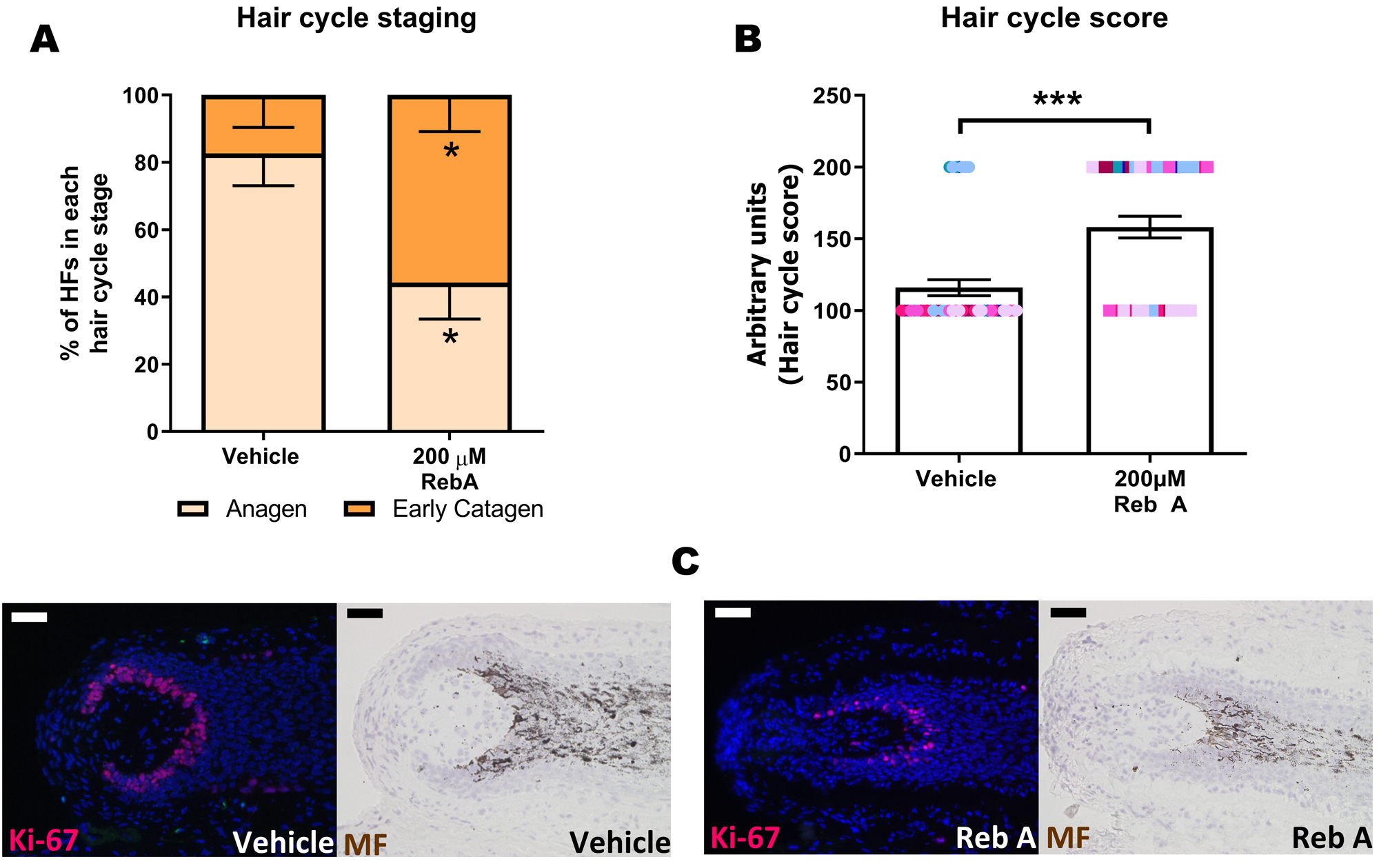

CUTANEON No.2 and No.3. – Promotion of hair growth
CUTANEON also revealed that human hair follicles express a special TRP ion channel, called TRPM5 which recognizes, among other molecules, well-known pheromones: stimulating this chemosensory receptor with naturally occurring pheromones (i.e. CUT-2: 2,3 DiMethylPiperazine; CUT-3: 2-Heptanone) prolongs the growth of human scalp hair follicles ex vivo.
Our research pioneers the use of cosmetically applicable pheromones as novel human hair growth promoters. This promises to be very useful in the drug-free management common hair growth disorders such as androgenetic alopecia and telogen effluvium.
CUTANEON No.4. and No.5. – UV-free tanning
“UV-free tanning” so as to achieve sun tan-like skin darkening without the deleterious effects of UV light, which promotes skin aging and skin cancer, has long been attempted by cosmetic industry. CUTANEON has discovered a novel principle for achieving this via targeting two previously unappreciated TRP ion channels that we have found to control human skin pigmentation.
CUTANEON has discovered that the target-specific, topical activation of either of these two TRP ion channels by their respective naturally occurring agonist(s) (CUT-4, CUT-5) greatly upregulates epidermal melanin production and activates epidermal melanocytes.
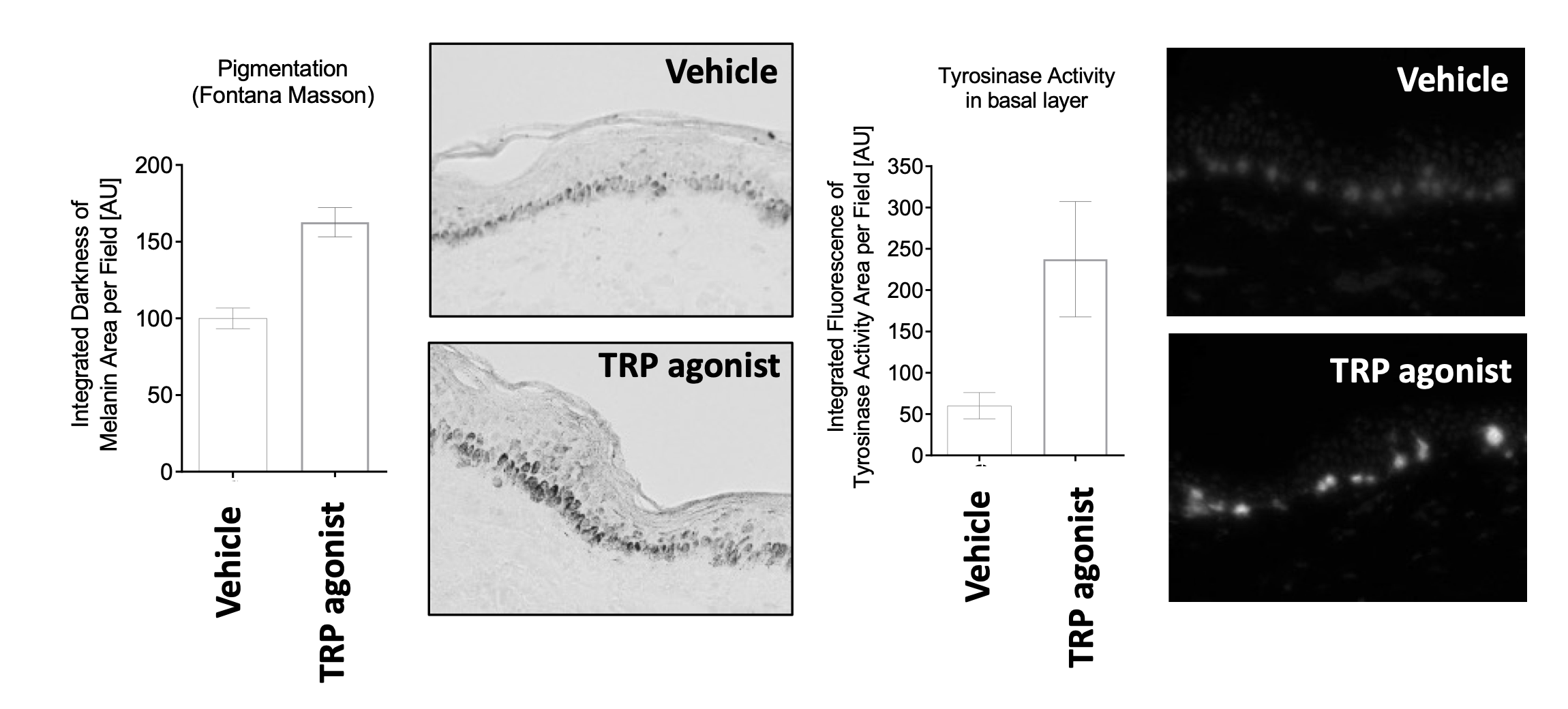
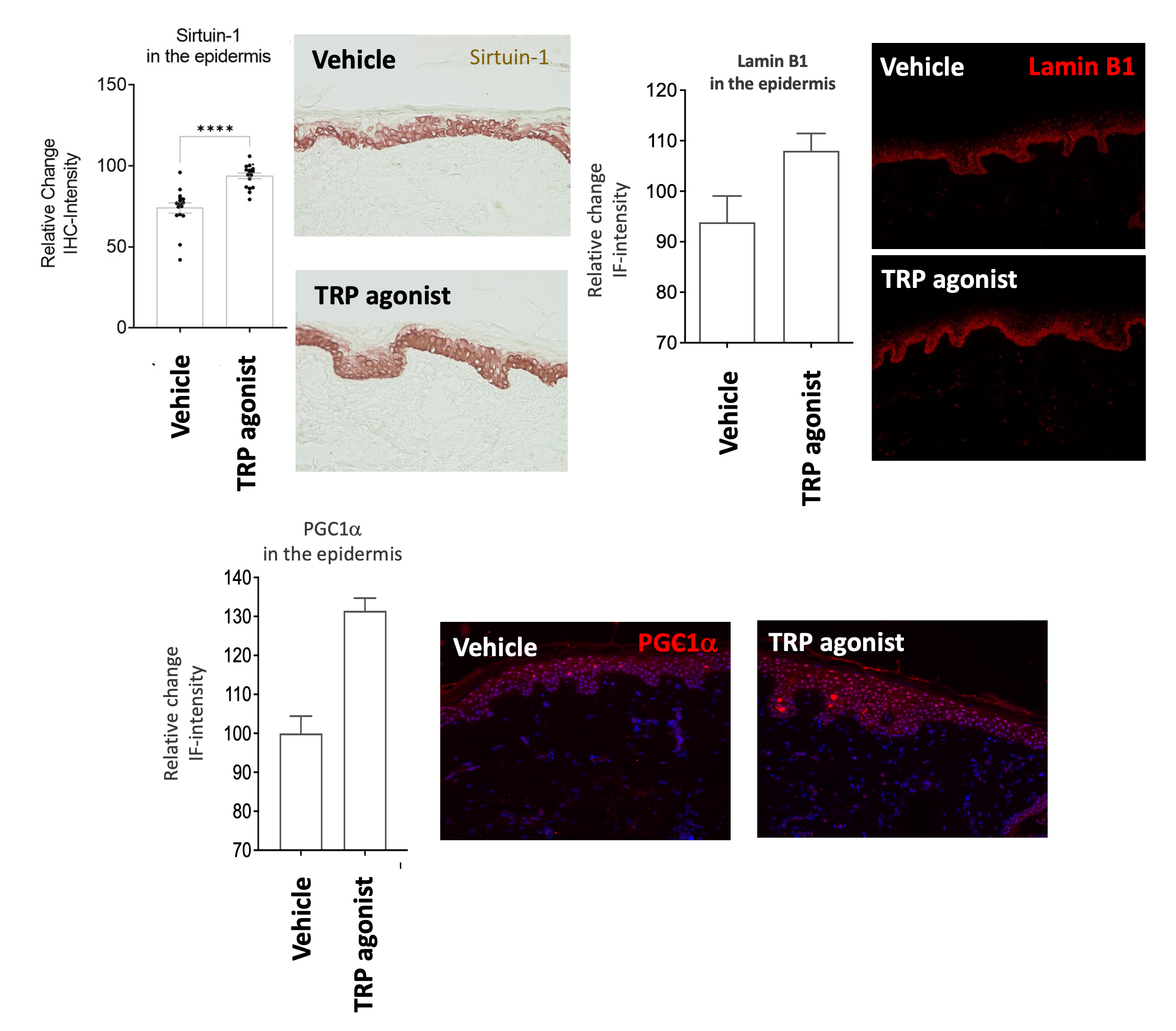
CUTANEON No.6. – Skin rejuvenation
One of the greatest challenges in cosmetic research is the development of novel and safe products that effectively inhibit skin aging or even promote skin rejuvenation. Most recently, CUTANEON succeeded in identifying specific TRP ion channel agonists that manage to do exactly that.
Namely, by using the best pre-clinical model for skin aging (i.e. human skin organ culture), CUTANEON discovered that a target-specific, activation of one selected TRP ion channel by topical application of its naturally occurring activator (CUT-6) dramatically altered well-established skin aging biomarkers in a manner that indicates profound anti-aging properties.
Corresponding patent applications (EP, PCT) have been submitted and are currently undergoing evaluation.
CUTANEON No.7. – Regulation of hair pigmentation
Cutaneon has made a groundbreaking discovery that the taste receptor TAS2R50 plays a key role in regulating hair pigmentation. This innovative technology utilizes a range of compounds designed for use in medicinal, cosmetic, or dietary applications, offering the potential to restore natural hair pigmentation.
Hair greying is a widespread phenomenon, affecting approximately 50% of the general population. The prevalence increases with age, impacting 15% of individuals aged 30-34 and 97% of those aged 60 and above. While older individuals may choose to conceal grey hair with dyes, premature greying in younger people can have profound psychological and social effects, sometimes comparable to the distress caused by baldness.
As a result, demand for anti-grey hair solutions is rising rapidly, making them an increasingly influential segment in the hair care industry. Cutaneon’s discovery presents a promising new approach to addressing this universal concern.
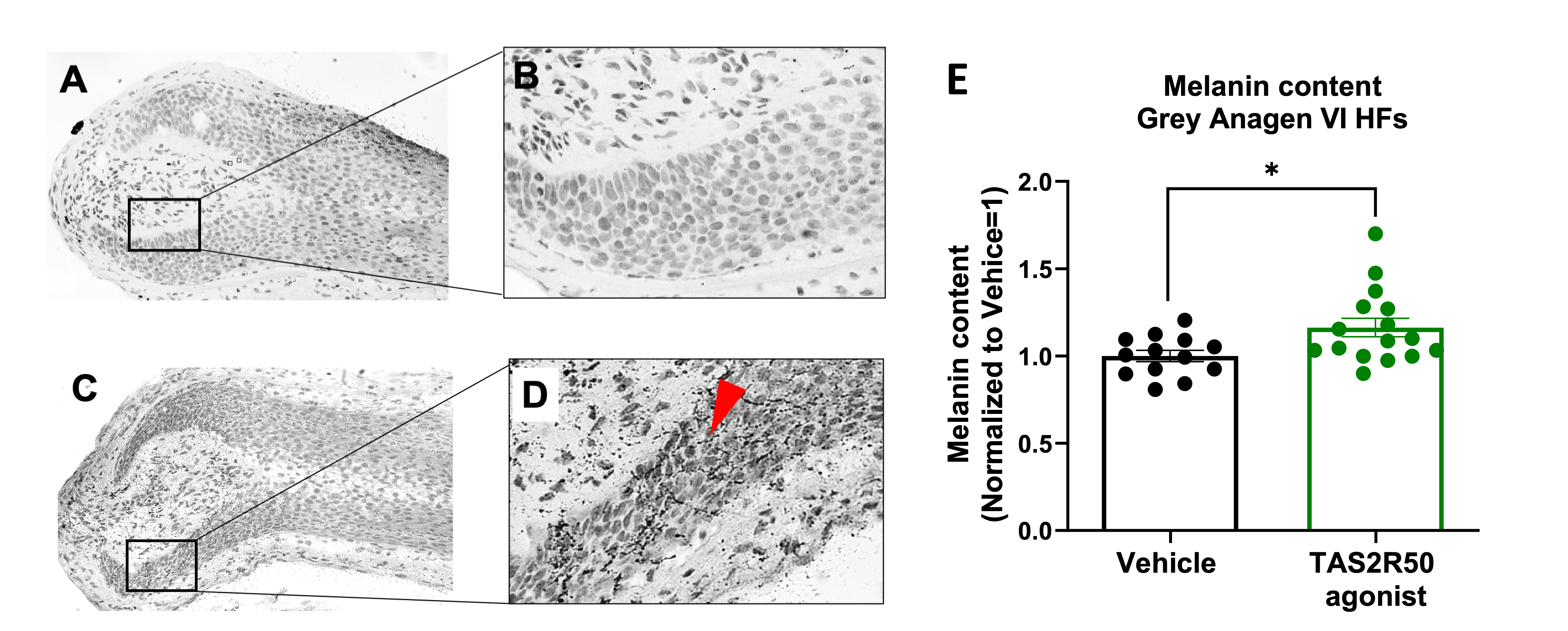
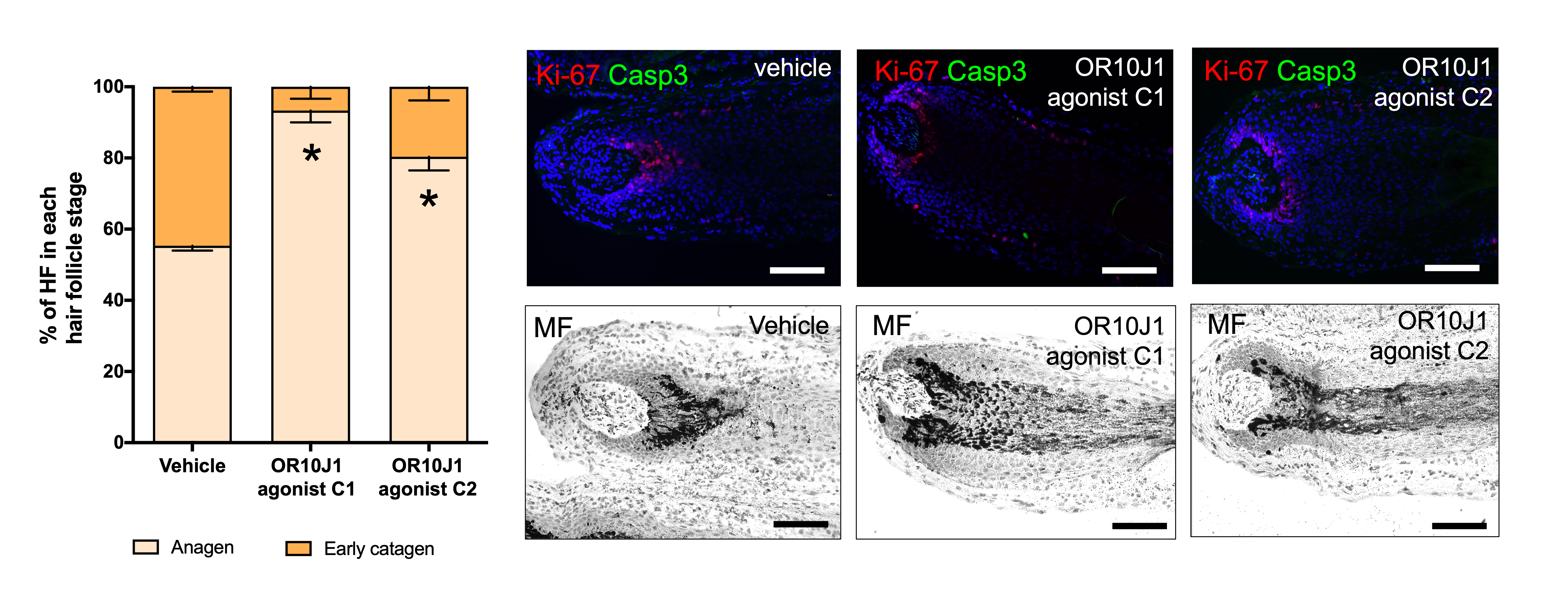
CUTANEON No.8. – OR10J1 promotes hair growth and epithelial stem cell function
At Cutaneon, we are redefining the science of hair growth. In our persistent pursuit of innovation, we have made an extraordinary discovery—the olfactory receptor OR10J1 is a key regulator of hair growth.
Olfactory receptors are traditionally known for their role in detecting scents, but our research has uncovered their game-changing impact on hair follicle stimulation. By activating OR10J1 with a specialized agonist, we have proven that it:
- Boosts the anagen (growth) phase of hair follicles
- Enhances follicle elongation for stronger, healthier hair
- Increases OR10J1 expression in the basal CD34+ area in the hair follicle, amplifying its hair growth effects without any safety issues
This means that with the right active agents, we can now effectively stimulate natural hair growth—offering a powerful new solution for those seeking thicker, fuller hair.
Cutaneon’s revolutionary technology is setting a new standard in hair care, bridging the gap between science and beauty. Experience the future of hair growth—powered by biology, perfected by innovation.
EXAMPLES OF OTHER INNOVATIVE TECHNOLOGIES:
Technology No.9. – Natural autophagy promoter that stimulates hair growth
Extensive research is underway to further validate and enhance the technology, reinforcing its scientific credibility and market potential.
Technology No.10. – Prevention of chemotherapy-induced hair loss by selective, transient cell cycle arrest only in healthy hair follicle cells
Extensive research is underway to further validate and enhance the technology, reinforcing its scientific credibility and market potential.

